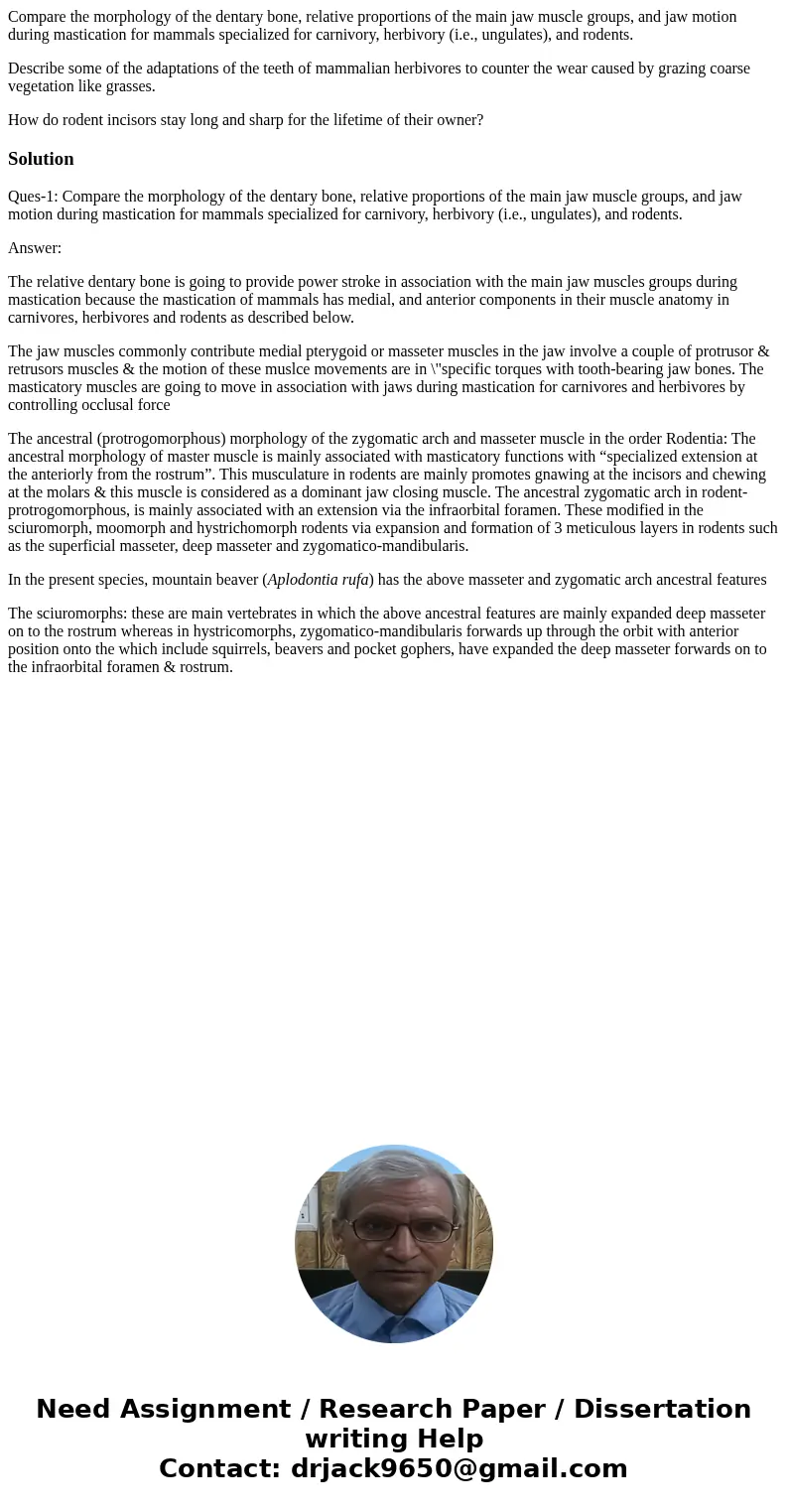Compare the morphology of the dentary bone relative proporti
Compare the morphology of the dentary bone, relative proportions of the main jaw muscle groups, and jaw motion during mastication for mammals specialized for carnivory, herbivory (i.e., ungulates), and rodents.
Describe some of the adaptations of the teeth of mammalian herbivores to counter the wear caused by grazing coarse vegetation like grasses.
How do rodent incisors stay long and sharp for the lifetime of their owner?
Solution
Ques-1: Compare the morphology of the dentary bone, relative proportions of the main jaw muscle groups, and jaw motion during mastication for mammals specialized for carnivory, herbivory (i.e., ungulates), and rodents.
Answer:
The relative dentary bone is going to provide power stroke in association with the main jaw muscles groups during mastication because the mastication of mammals has medial, and anterior components in their muscle anatomy in carnivores, herbivores and rodents as described below.
The jaw muscles commonly contribute medial pterygoid or masseter muscles in the jaw involve a couple of protrusor & retrusors muscles & the motion of these muslce movements are in \"specific torques with tooth-bearing jaw bones. The masticatory muscles are going to move in association with jaws during mastication for carnivores and herbivores by controlling occlusal force
The ancestral (protrogomorphous) morphology of the zygomatic arch and masseter muscle in the order Rodentia: The ancestral morphology of master muscle is mainly associated with masticatory functions with “specialized extension at the anteriorly from the rostrum”. This musculature in rodents are mainly promotes gnawing at the incisors and chewing at the molars & this muscle is considered as a dominant jaw closing muscle. The ancestral zygomatic arch in rodent- protrogomorphous, is mainly associated with an extension via the infraorbital foramen. These modified in the sciuromorph, moomorph and hystrichomorph rodents via expansion and formation of 3 meticulous layers in rodents such as the superficial masseter, deep masseter and zygomatico-mandibularis.
In the present species, mountain beaver (Aplodontia rufa) has the above masseter and zygomatic arch ancestral features
The sciuromorphs: these are main vertebrates in which the above ancestral features are mainly expanded deep masseter on to the rostrum whereas in hystricomorphs, zygomatico-mandibularis forwards up through the orbit with anterior position onto the which include squirrels, beavers and pocket gophers, have expanded the deep masseter forwards on to the infraorbital foramen & rostrum.

 Homework Sourse
Homework Sourse